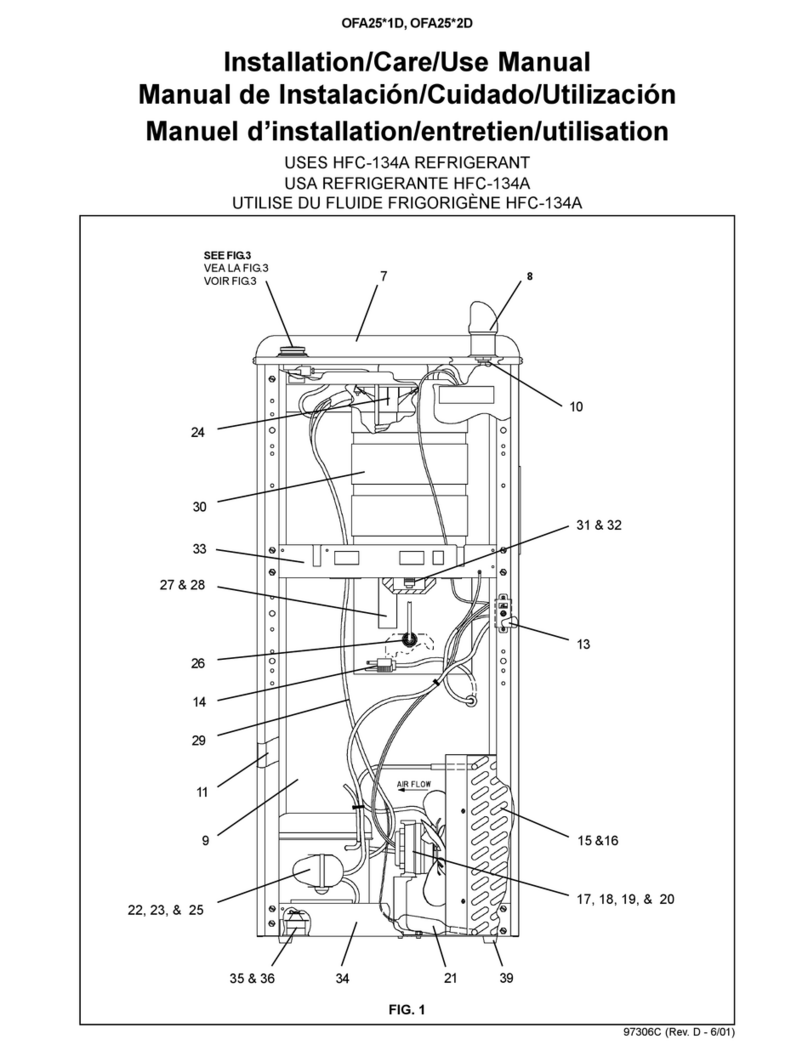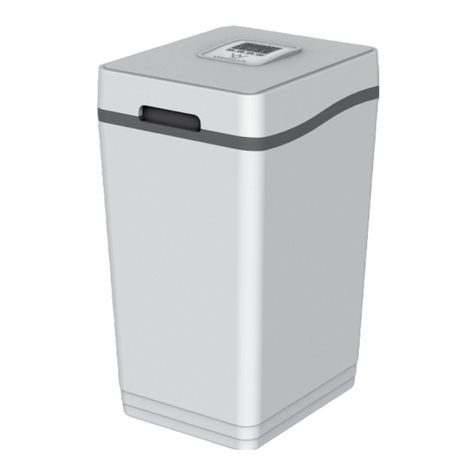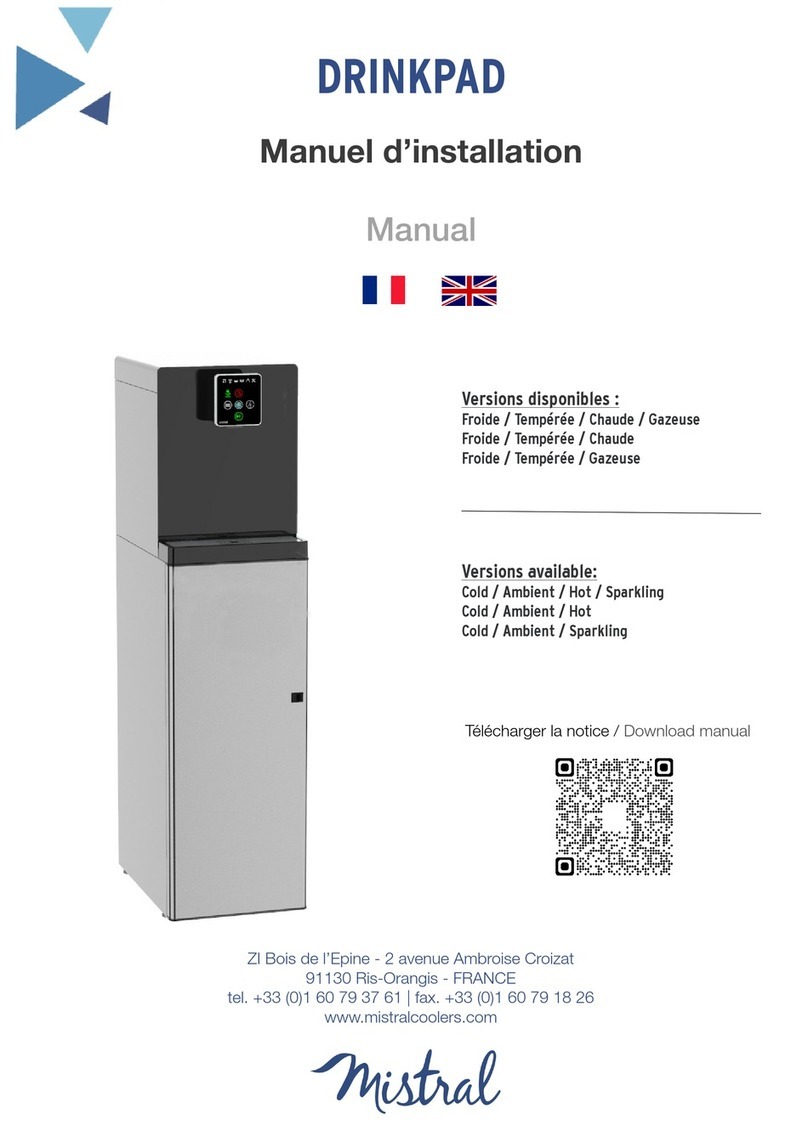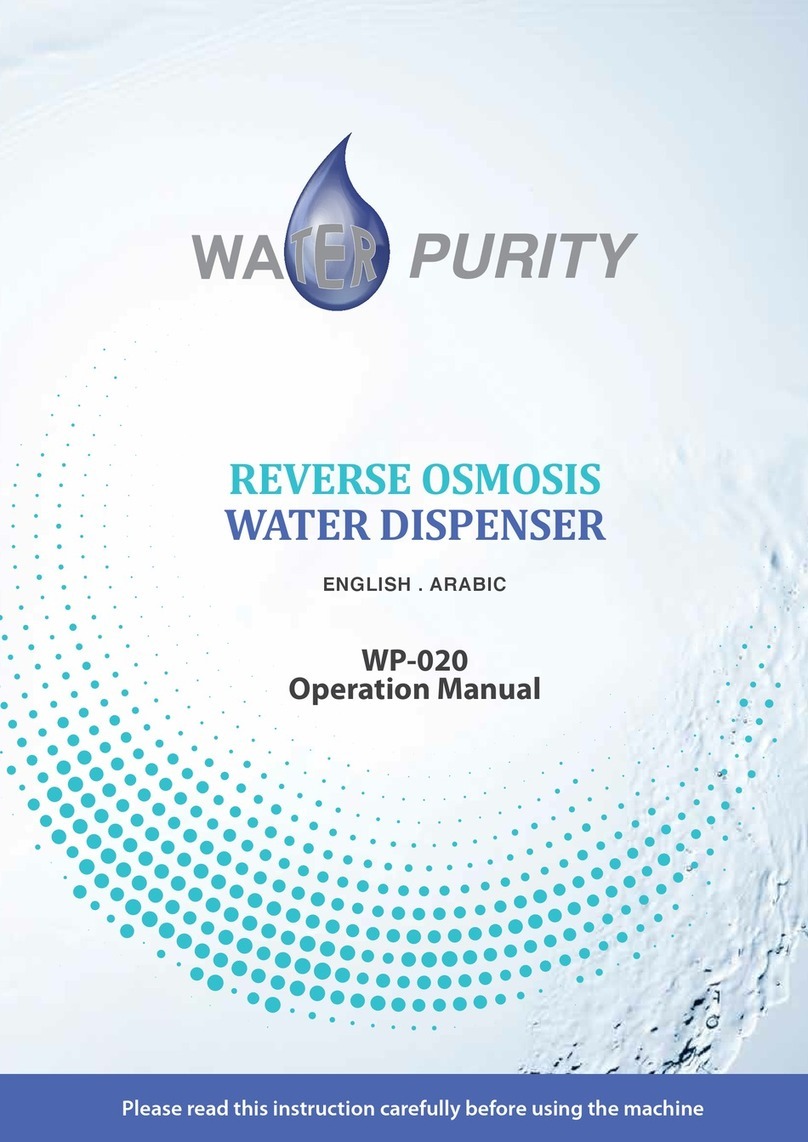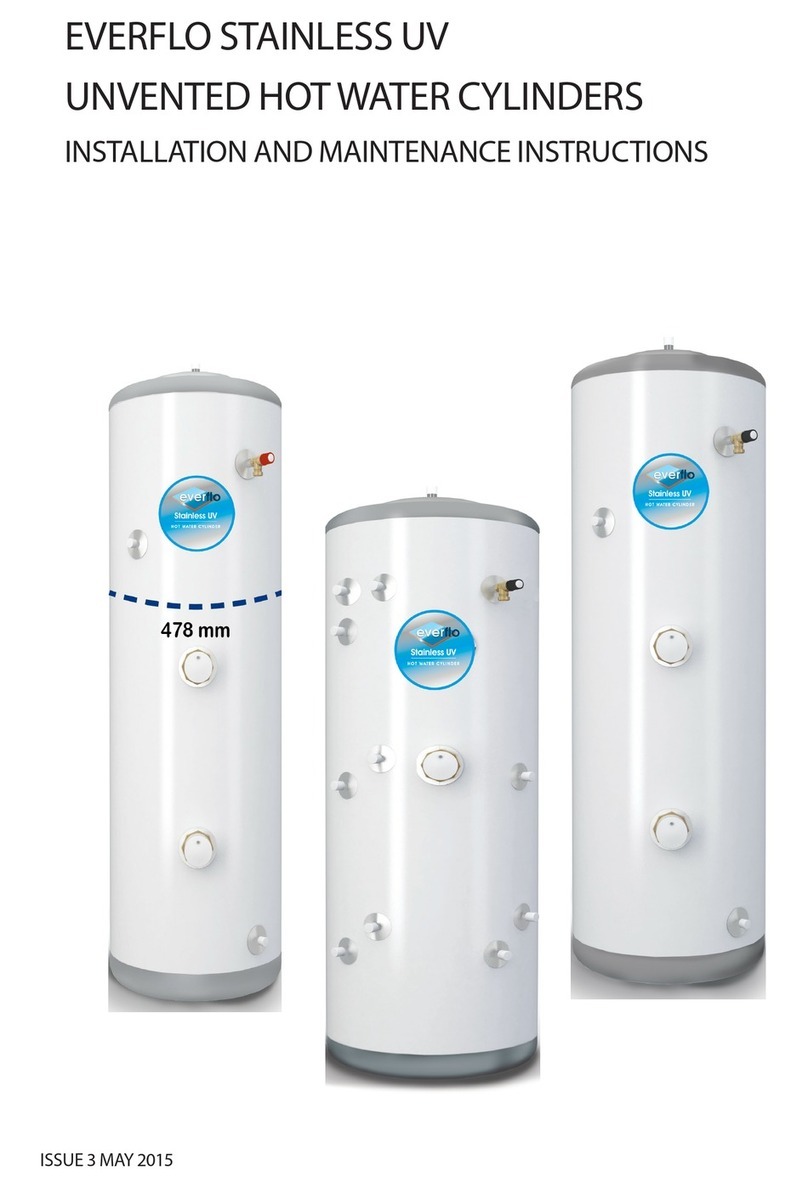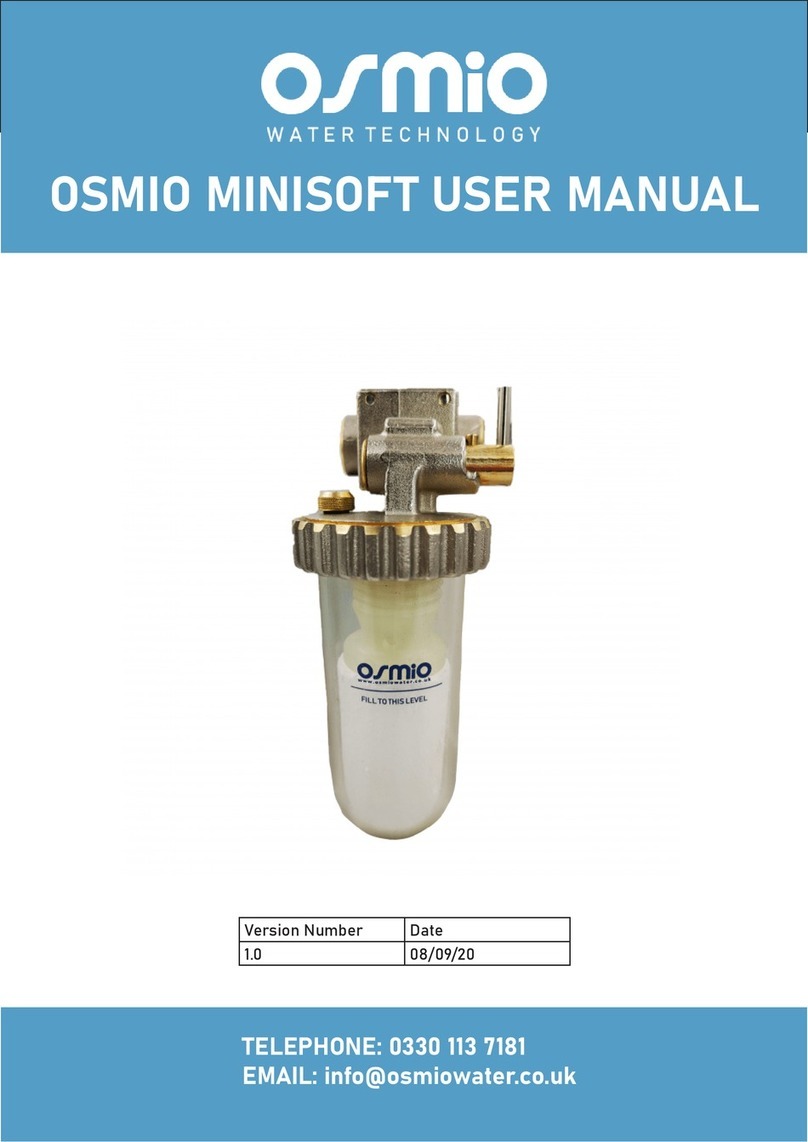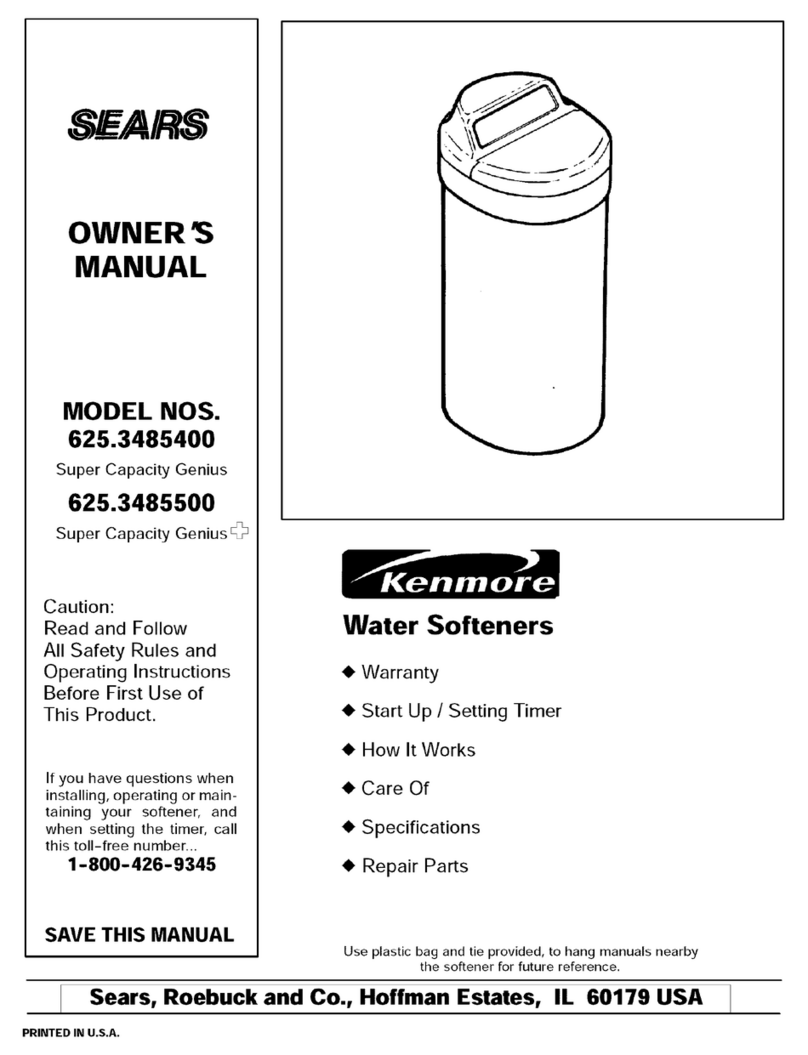Prio Expert P500 User manual

Prio®Expert
User’s Guide
Point-of-Use Direct Flow
Reverse Osmosis Bottleless
Hot and Cold Drinking
Water Dispenser
HOT
COLD
P500

2
Before operating this appliance, please read the instructions carefully. You
may want to save this guide for your future reference. Failure to follow the
instructions or meet the operating requirements may lead to the product’s
failure, malfunction, property damage or personal injury.
Safety Warning
■ Plug the dispenser into an electrical outlet only aer you nish the installation.
■ Check if the voltage indicated on the dispenser corresponds to the local
mains voltage before you connect the appliance.
■ Do not use the dispenser if it is damaged in any way. Contact an authorized
service center for repair.
■ When unplugging the dispenser from the mains, do not pull on the power
cord. Avoid touching the plug with wet hands.
■ Do not block air vents of the dispenser or place any items on it. Do not place
it near the sources of heat, radiators, etc. Do not place it in a tightly closed
space where it may overheat.
■ Keep the appliance out of reach of pets or other animals.
■ In case of leakage malfunction or water presence around the appliance
shut o the electrical power to the circuit rst, then pull the plug out of the
electrical outlet.
■ Remove the plug from the electrical outlet and shut o the inlet valve during your
vacations or other extended periods of time when the appliance is not in use.
■ Unplug the dispenser from the electrical outlet while servicing the hot &
cold water unit, and changing the membrane or lters.
■ Do not use the appliance if operating requirements such as water tempera-
ture/water pressure/electrical supply, etc. are not met. There may be other
local regulations to comply with.
■ Do not use the appliance with water that is microbiologically unsafe or of
unknown quality without adequate disinfection before or aer the system.
■ The dispenser was not designed to be used with power cord extenders,
power lters, external transformers, outlet splitters, etc.
■ Do not use the waste water produced by the appliance for drinking or cooking.
■ Never store or operate the appliance in direct sunlight.
■ Caution! Hot water up to 200 °F (95 °C)!
■ This appliance is not intended for use by persons (including children) with
reduced physical, sensory or mental capabilities, or lack of experience and
knowledge, unless they have been given supervision or instruction con-
cerning use of the appliance by a person responsible for their safety.
■ Children should be supervised to ensure that they do not play with the ap-
pliance.
■ At the end of its life, the appliance should be disposed o in an appropriate
manner.
Disposal
Old appliances still contain many recyclable materials. Therefore, please take
used unit to your retailer or recycling center so that it can be recycled.

3
Description
Congratulations on your purchase of the Prio® Expert point-of-use direct ow R.O. bottle-
less hot and cold drinking water dispenser! With proper installation and maintenance, it will
provide you with high quality drinking water for many years.
The R.O. system removes odor and most harmful substances such as heavy metal ions and
total dissolved solids from tap water making it tasty, fresh and vital.
The Reverse Osmosis ltration system consists of two parts: the sophisticated pump unit
with auto-ush control valve and powerful booster pump and the R.O. ltration unit with
high-production R.O. membrane. Together, they provide direct ow capability of water ltra-
tion in real time, eliminating the need of a room temperature water tank usually found on
conventional systems.
The dispenser has two water taps: for cold water (sustained temperature below 50 °F (10 °C))
and for hot water (sustained temperature up to 200 °F (95 °C)). Hot water tap provided with
a child safety lock.
The hot and cold water functions can also be turned o together or independently to conserve
electricity: the R.O. ltration system will continue to operate as a high production water lter.
Your water dispenser could be equipped with optional ltered water oulet for connecting
refrigirator, ice maker, extra faucet, etc.
Please familiarize yourself with the general concept behind the product and main modes of
operation.
Key Features:
■ Clean and safe drinking water right in your home. No need to transport and dispose of
bottled water any more.
■ Factory-preinstalled lters and membrane for faster and easier setup.
■ Filters and membrane quick-change housings for easy regular maintenance.
■ Compact and beautiful design.
■ Automatic ush valve: for peak performance and healthier membrane. Regular 18-seconds
powerful ush prevents the scale and debris build-up on the membrane outer surface.
■ Powerful booster pump increases pressure to radically improve the performance and ef-
fectiveness of the R.O. unit in all three key areas: increases ltered water ow (production
rate), increases rejection rate (improves water purication quality), increases recovery
rate (decreases amount of waste water).
■ No room-temperature storage tank – no stale or owered water.
■ Prolongs the membrane and pre-lter(s) service life due to increased recovery rate.
■ Fully automatic operation: just push the tap and get clean hot or cold water instantly;
automatic shut o and ush.
■ LED indicators: easily understand what the state of your dispenser is.
■ Food grade stainless steel hot and cold water tanks.
■ Heavy duty, commercial use ready.
■ Thanks to R134a coolant compressor system and direct ow R.O. clean water production,
the system is able to produce virtually unlimited amount of perfect temperature cold water.
■ Quick ttings for easy tube connections and change of lters.

4
Direct Flow R.O. Systems Benets:
Powerful booster pump and high-production R.O. membrane make it possible to build a high-
end direct ow R.O. machine that oers high performance and water quality.
■ Freshness of water ltered in real time. No more stale water from a room temperature tank.
■ Virtually unlimited ltered water production. While conventional systems with tanks are
limited by the tank capacity, and require prolonged timeouts to rell the tank, a direct ow
system is limited by the membrane ltration rate only.
■ Better water purication quality due to improved contaminant rejection rate.
■ Typically, up to three times less water is wasted per gallon of ltered water, compared to
the conventional tank and water storage systems, this is due to the much higher eciency
(recovery) rate. Saves you money and Planet Earth’s water resources!
■ Lower cost of ownership due to prolonged service life of pre-lters and membrane, which
is in turn a result of higher eciency rate: less water is treated overall by pre-lters and
the membrane for each gallon of permeate produced. This saves the capacity of pre-lters
and ensures either less frequent change necessity or better purication.
■ Less number of components leads to better reliability.
How It Works:
The heart of P500 water dispenser is a direct
ow reverse osmosis multi-stage water ltra-
tion unit. Water supply is done through the in-
let valve, waste water is drained through the
drain saddle, and ltered water delivered to
water taps through heater and cooler. Detailed
connection scheme is shown on the following
charts.
Aer installation, you will get clean hot or cold
water by simply pushing the taps. The pump
will turn on automatically and will produce l-
tered water in real time until the heater and
cooler are full, and then the system will shut
o automatically. Regular 18-seconds auto-
ush protects membrane from scale and de-
bris build-up.

5
LED indicators
■ A – The heater is on. Indicator will turn o when hot
water temperature reaches 200 °F (95 °C) or heater is
turned o manually.
■ B – The dispenser is plugged into the mains.
■ C – The cooler is on. Indicator will turn o when cold
water temperature drops below 50 °F (10 °C) or cooler
is turned o manually.
Pressure and Level Switches:
The dispenser is equipped with low pressure switch and water level switch. The low pressure
switch shuts o the pump when there is no inlet water or its pressure is too low. The water
level switch shuts o the pump when heater and cooler are full.
Pump:
The dispenser is equipped with a low voltage booster pump powered by the included trans-
former for safe operation.
Inlet valve:
An adapter ball valve is included to be installed into the cold water supply line to feed water
to the dispenser inlet.
Drain saddle:
Fits a standard 1.5” diameter drain pipe to drain the waste water from the drain outlet of the dispenser.
Pre-Filters:
The dispenser has two pre-lters: sediment pre-lter on the rst stage and activated car-
bon pre-lter on the second stage. They provide initial ltration of the water and protect the
following thin lm composite R.O. membrane from dirt and aggressive chemicals such as
chlorine oen found in tap water.
1
2
3
5
6
4
11
12
7
10
8
9
Dispenser Overview
1 - LED indicators
2 - safety lock
3 - hot water tap
4 - cold water tap
5 - drip tray
6 - front cover
7 - heater power switch
8 - cooler power switch
9 - power cord
10 - drain spout
11 - inlet tting (3/8” tube)
12 - drain tting (1/4” tube)
HOT CO D
A
C
B

6
R.O. membrane:
The third and main stage of the ltration is high-production R.O. membrane. It is “semi-perme-
able”, which means that it allows water to pass through but prevents dissolved particles from
passing through. It splits the feed water into two streams: clean water goes to the post-lter
and then onto the heater and cooler. Waste water with rejected particles goes down the drain.
Post-Filter:
Last stage of ltration is an activated carbon post-lter and/or remineralization for ne con-
ditioning and keeping the extra freshness of your water.
Specication
Operating requirements:
■ Minimum supply water pressure: 7.25 psi (0.05 MPa)
■ Maximum supply water pressure: 80 psi (0.55 MPa)
■ Minimum water temperature: 41 oF (5 oC)
■ Optimal water temperature: 59–77 oF (15–25 oC)
■ Maximum water temperature: 95 oF (35 oC) / up to 105 oF (40.5 oC) short-term
■ Ambient air temperature: 41–105 oF (5–40.5 oC)
■ Water source: tap water supply, chlorinated or non-chlorinated, bacteriologically safe
■ Supply water pH range: 4.0-11.0
■ Supply water turbidity: < 1 NTU
■ Supply water components: Hardness (CaCO3) <180 mg/L (<10.5 gpg), Iron <0.1 mg/L,
Manganese <0.05 mg/L, Hydrogen Sulde 0.00 mg/L
■ Maximum supply water TDS: 1000 ppm
■ Indoor use only.
■ Electrical input: AC 220-240V 4.0A 50/60 Hz
■ Maximum length of the line between the inlet valve and the dispenser1: 23 (7 m) - 1/4”
tubing; 160 (50 m) - 3/8” tubing. Purchase of extra tubing may be required.
Performance:
Performance of the appliance such as ltered water delivery rate, rejection rate, hot and cold
water temperature, etc. is highly dependent on local conditions (inlet water pressure, water
and ambient air temperature, TDS and degree of contamination, etc.) and system use pattern.
Actual performance may vary.
■ Filtered water production rating: 400 gpd (1500 lpd) maximum
■ Filtered water delivery rate, typical: 0.159–0.330 gpm (0.6–1.7 l/min)
■ Membrane rejection rate2, typical: 90%
■ Recovery rate (system eciency3), typical: 50%
■ Drain water ow restrictor: 300 cc (ml/min) nominal, up to 450 cc in working mode, open
ow in ush mode.
■ Auto-ush duration: 18±5% s
1Average maximum length is given. Actual maximum supported length depends on supply water pressure.
2For all dissolved solids combined as measured by TDS or conductivity meter.
3 Eciency rating means the percentage of the inuent water to the system that is available to the user as
reverse osmosis treated water under operating conditions that approximate typical daily usage.

7
■ Cold water capacity: up to 1500 lpd
■ Cold water tank volume: 0.35 gal (1.3 l)
■ Cooler power: 85W
■ Hot water capacity: up to 144 lpd
■ Hot water tank volume: 0.18 gal (0.7 l)
■ Heater power: 420W
Weight and size:
Size (WDH): 10.2 x 13 x 40” (26 x 33 x 101 cm)
Weight, without water: 37.5 lbs (17.0 kg)
Warranty:
1 year limited warranty
Package contents:
(1) Point-of-use water dispenser
(1) Universal worldwide adapter ball valve (G1/2” - G3/8” - UNEF 9/16”-24 - JG 1/4”)
(1) Teon tape roll
(1) Drain saddle
(1) Wrench
33 (10 m) Water tubing ¼”
(1) ¼” x ¼” Union check valve
(1) ¼” x ⅜” Union elbow tting
User’s guide
Installation
Notes:
1. Shut o the cold water supply under the sink or the location where the system will be
installed. If the existing valve is inoperable, the water supply to the house must be shut
o. Then, relieve the water pressure by opening the cold water tap. Do not connect the
system to hot water source.
2. Depending on your plumbing system and tubing path you may need to use tools like vari-
able speed drill, drill bits, screw driver, wrench, etc. You may want to ask a professional
service provider such as certied plumber to install the inlet valve adapter, the drain sad-
dle and the tubing conduits to assure a trouble-free setup.
3. During installation you will need to cut the supplied ¼” or extra purchased 3/8” tubing
into segments as needed. Use your utility knife for that or similar tool. See the following
charts to determine the connection scheme and length of hoses necessary. You may need
to purchase extra tubing for far-reaching or other corner case installations.
4. Do not connect the dispenser to the electrical supply until the setup is completed.
5. With initial operation, check for leaks. If a leak is observed, verify that the tubing is pushed
into the quick tting far enough to seal the tubing against the O-ring and that the tubing
was cut at 90o.

8
General connection scheme:
from inlet valve
to drain or waste water
collection container
AСB D
Cold water tap
Hot water tap
Drain spout
1
23
5
6
7 11
10
1 - inlet valve
2 - low pressure switch
3 - solenoid valve
4 - pump
5 - check valve
6 - flush valve
7 - drain saddle
8 - float level switch
9 - cooler
10 - heater
11 - optional check valve
A - sediment pre-filter
B - activated carbon block pre-filter
C - R.O. membrane element
D - water conditioning post-filter
8
9
4

9
IMPORTANT: Cut tubing at 90° to ensure a
watertight seal:
The maximum length of hose connections between the inlet valve and the dispenser1 is 23
(7 m) using 1/4” tubing and 160 (50 m) using 3/8” tubing. If you use 1/4” tubing then connect
included 1/4” x 3/8” elbow tting to the dispenser inlet tting. If you use 3/8” tubing then con-
nect included 1/4” x 3/8” elbow tting to the inlet valve.
Installation Steps:
1. Install adapter ball valve (included) to the
cold water supply.
Use some Teon or plumbers sealing tape to
prevent leaks. Use three included threaded
adapters to make dierent connection con-
gurations (see chart for details).
To Connect the tubing to a tting:
1. Remove the lock if present (not present in self-locking ttings).
2. Push. Insert the tube rmly until full stop.
3. Pull the collet back slightly.
4. Replace the lock (if present).
To Disconnect the tubing:
1. Remove the lock if present (not present in self-locking ttings).
2. Push the collet and hold.
3. Pull the tubing out.
4. Replace the lock (if present).
1
4
3
2
1
3
3
ut
1
4
2
3
No skewed cut!
4
3
2
1
3 8”
UNEF 9/16”-24
G3/8” G1/2”
G1/2”
Adapter Adapter
UNEF 9/16”-24
UNEF 9/16”-24
G3/8”
G1/2”
1
Adapter
1
Adapter
2
3
1Average maximum length is given. Actual maximum supported length depends on supply water pressure.

10
2. Install drain saddle.
The square foam gasket with a circle cut out must be applied to the inside of the drain sad-
dle. Remove sticky tape backing and stick to the drain saddle as shown.
Drill a ¼” hole in the drain pipe
above the trap and on the verti-
cal or horizontal ta l piece. Locate
the drain connection away from
the garbage disposal to prevent
potential contamination and sys-
tem fouling. It’s recommended to
install optional check valve on the
drainage line. It works as a sewer
backup valve in this case.
3. Remove gags and connect tubes as follows. See the connection chart for details.
■ Insert water supply tubing from inlet valve adapter into the “inlet” t-
ting of the dispenser.
■ Insert the waste tubing from the “drain” tting of the dispenser into
the drain saddle (through the union check valve on the way) or to
a waste water collection container. Install the check valve with the
arrow in the direction of ow.
i
mount drain
saddle here
never
mount
here
never mount
here

11
Initial washing:
Aer installation it is recommended to perform the initial washing of the system. For this:
ON
OFF
ON
OFF
■ switch o heater
and cooler
■ open cold water
supply valve
■ open the inlet
valve
■ plug the dispens-
er’s power cord
into the electrical
outlet
■ wait for heater and cooler become full (pump shuts o)
■ shut o the inlet valve
■ unplug the dispenser from the electrical outlet
■ drain water through the hot and cold water taps
■ repeate the cycle “ll up heater and cooler - drain water” 2-3 times
■ open inlet valve
■ plug the dispenser into the elecrtical outlet
■ wait for heater and cooler become full (pump shuts o)
■ turn on heater and cooler
■ your dispenser is ready for use.
Please note that aer initial installation or changing the lters or membrane, air contained
in the new dry system or lter may go out sometimes producing foamy, white ltered water.
Water may look white due to tiny air bubbles in it. If you leave the water to stand for few min-
utes all bubbles will surface and eliminate. Such aerated water is clean and safe. Gradually
over the coming days all air inside your system will nd its way out. To make this process
faster you may repeat the initial washing procedure until you’re pleased with the result. Also
note that if for some reason the water supply contains a lot of dispersed air, your R.O. system
may start producing aerated water again.

12
Regular Use
To get cold water just push cold water tap with a cup. You can turn water cooler o with a blue/
green switch on the back of the dispenser. It is recommended to keep coller always on to prevent
secondary water pollution.
To get hot water push safety button rst, then push hot water tap with a cup. You can turn water
heater o with a red switch on the back of the dispenser.
Caution! Hot water up to 200 °F (95 °C)!
Please note that R.O. membrane needs up to 50 hours of active operation before reaching peak
performance in terms of water ow, recovery and rejection rates.
For your safety and peace of mind please unplug the dispenser from the electrical outlet and shut
o the inlet valve before servicing your R.O. system such as changing lters or membrane, or dur-
ing vacations.
Tips:
■ If your dispenser is provided with optional ltered water outlet you may connect refrigerator, ice
maker or extra faucet.
■ Operating the system using soened feed water greatly reduces the chances of membrane fail-
ure and prolongs lters and membrane service l fe.
Changing Filters and Membrane
This R.O. system contains the replaceable components critical to the eciency of the system. Re-
placement of a component should be with one of identical specications, as dened by the manu-
facturer, to assure the same eciency and contaminant reduction performance.
To reduce the risk of water leakage or ooding, and to ensure optimal R.O. system performance:
■ Change the disposable pre-lters every 6 months or sooner if you observe a noticeable reduc-
tion in water ow rate.
■ Change the disposable post-lter every 12 months or sooner if you observe a noticeable reduc-
tion in water ow rate.
■ Change the disposable R.O. membrane every 36 months or sooner if you observe a noticeable
reduction in water ow rate.
Failure to replace the disposable lters & membrane at recommended intervals may lead to re-
duced system performance and cracks in the lter housings, causing water leakage or ooding.
Please note the capacity of the lters and membrane is limited. Their service life depends on the
degree of contamination of the water supply and system usage. All terms apply to normal house-
hold use. Actual performance may vary. You may need to change lters or the membrane sooner
than indicated f you notice chlorine or other tastes or smells, etc. Manufacturer recommends a
TDS test every six months.
Replacement Filters:
■ K871 (sediment pre-lter)
■ K870 (activated carbon pre-lter)
■ K858 or K856 (high-production R.O.
membrane)
■ K880 (activated carbon post-lter and
conditioner)
Optional post-lters which can also be used
instead of K880:
■ K875 (granular activated carbon post-lter)
■ K873 (granular activated carbon with
schungite natural mineral post-lter)
■ K870 carbon block pre-lter may also be
used as a post-lter.
To prevent leakage or cracks and ensure the safety of operation and top performance do not
disassemble the lters or try to regenerate them.

13
To change lter(s) or membrane:
тр ль ый выход ой п трубок обр т оос от ч ской бр ы д в тся угловой обр т ый кл п
боковой выход ой п трубок д в тся ф т г который со д я тся с выходо воды КО ЦЕ
ON
OFF
ON
OFF
■ switch o heater
and cooler
■ shut o the inlet
valve
■ unplug the dis-
penser from the
electrical outlet
■ open the dispenser’s front cover pulling it down
■ locate the lter (membrane) to be changed, disconnect its inlet and outlet ttings and
remove it
Note: Remove and change back one lter at a time, one aer another. Do not remove all lters
at once to avoid mixing up the tubes.
To change membrane and post-lter it is nessesary to remove supporting bracket. For this
disconnect inlet and outlet ttings rst.
Pre-lters could be changed without bracket removing.
■ take new lter (membrane) and install it
in the place of the removed one observ-
ing the water ow direction arrow on its
label and restoring the connections (see
the internal connections chart for details)
K871 K870
K880
K858

14
Note: For a pre- or post-lter you only need to connect its inlet and outlet. For the membrane
you have to connect the third outlet – to the waste water line. This outlet is located o the
center of the membrane housing. Elbow check valve tting (with the arrow) has to be con-
nected to the central (permeate) outlet of the membrane housing.
Aer you nished changing lters or the membrane follow the “initial washing” procedure as
described above. With initial operation, check for leaks. If a leak is observed, verify that the
tube or branch pipe of the lter/membrane housing is pushed into the quick tting far enough
to seal the tube against the O-ring and that the tubing was cut at 90o.
Cleaning & Disinfection
R.O. ltration system removes almost all bacteria and viruses from the water. However, sec-
ondary water pollution is possible at room temperature. It is recommended to perform the
cleaning & desinfection procedure every 3-6 months.
Note: It may be needed to perform the cleaning more oen if cooler and/or heater are turned
o for a suciant periods of time.
Cleaning & Disinfection Steps:
1. Prepare disinfection agent (bleach solution, vinegar, citric acid or other suitable disinfec-
tion agent).
Use personal protection equipment like goggles and gloves when working with disinfection
agent.
2. Dispenser inner cleaning:
You may need tools like screwdriver or others.
■ switch o heater and cooler
■ shut o the inlet valve
■ unplug the dispenser from the electrical outlet
■ wait for about 30 minutes until heater and cooler come to room temperature
■ take o the dispenser’s top cover unscrewing two screws on the back; pay attention to
wires connected to switches
■ take o cooler tank lid; pay attention to tube and wires connected to the lid
■ pour disinfectant into the cooler tank
■ put back cooler lid and top cover; wait for 15-30 minutes
■ drain water from hot and cold water taps until disinfectant smell appears
■ wait for 2-4 hours.

15
3. Dispenser washing:
■ drain water from hot and cold water taps, then drain residual water from the drain spout
on the back of the dispenser
■ perform the “initial washing” several times until there will be no disinfectant smell from
the water; drain water both from the taps and from the drain spout.
4. Dispenser outer cleaning:
■ take o the dip tray
■ wash both the tray and the screen (if present) and rinse both in clean tap water before
returning them to the dispenser
■ clean all outer surfaces of the dispenser with wet cloth
■ be sure to dry thoroughly so as not to leave moisture in any tight spaces.

16
Prio, Prio logo are the trademarks of DWT Deutsche Wassertechnologien GmbH, Germany.
As used herein, ® denotes registered trademark status in Germany only.
Copyright © DWT Deutsche Wassertechnologien GmbH, Germany, 2014, 2019. Rev.1219
Table of contents
Popular Water Dispenser manuals by other brands

Erie water treatment
Erie water treatment Eco Technical manual

Honeywell
Honeywell HWB2052 Series owner's manual
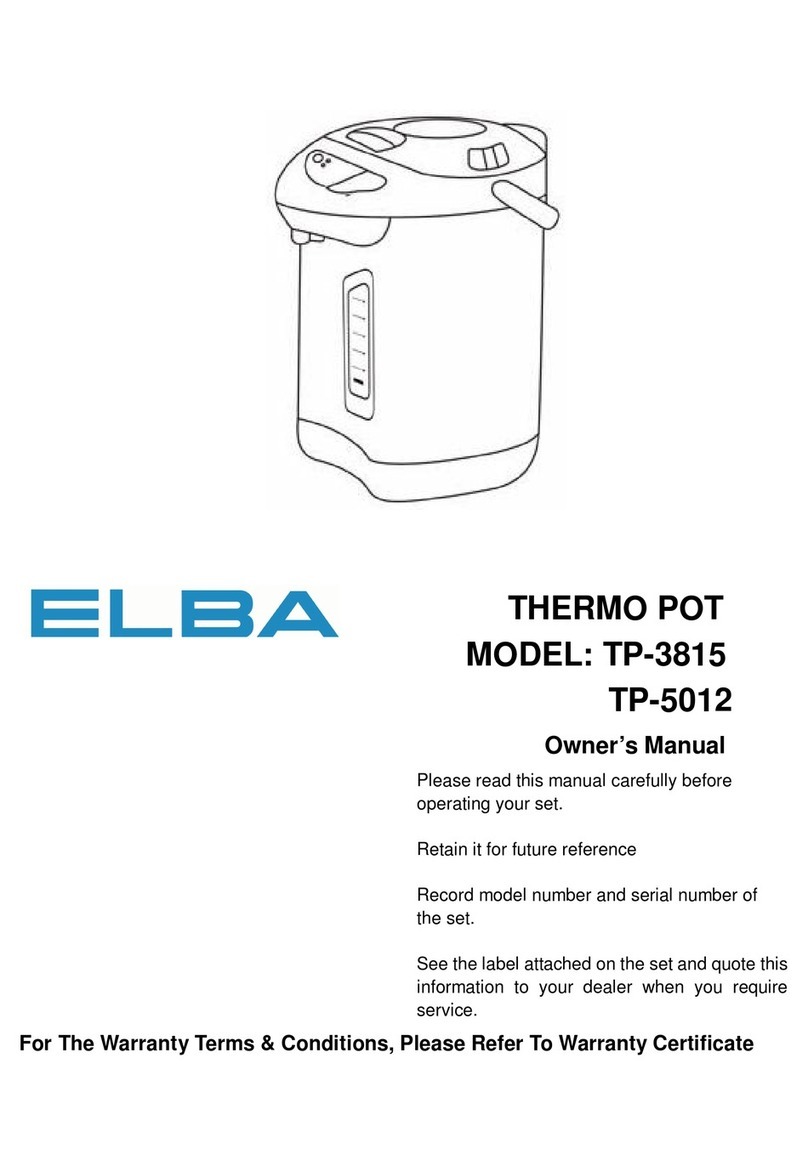
Elba
Elba TP-3815 owner's manual

Culligan
Culligan CSM Series Installation, operating and service instructions
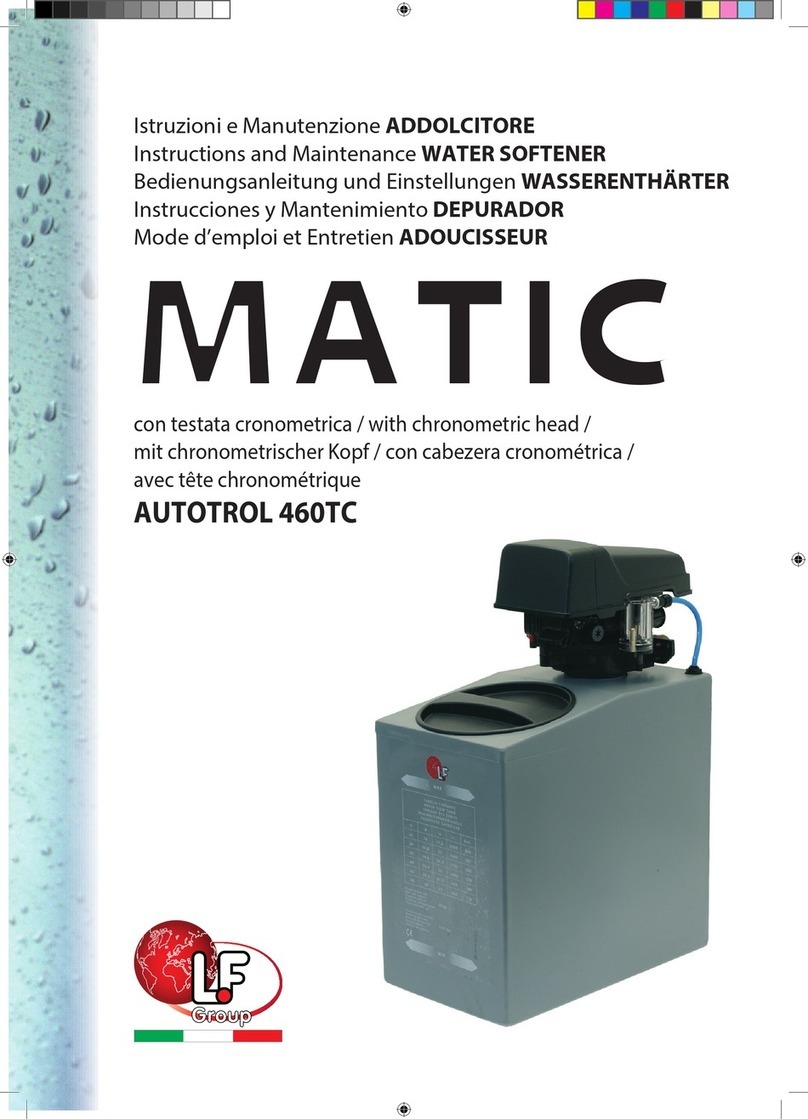
LF
LF MATIC 5 Instruction and maintenance
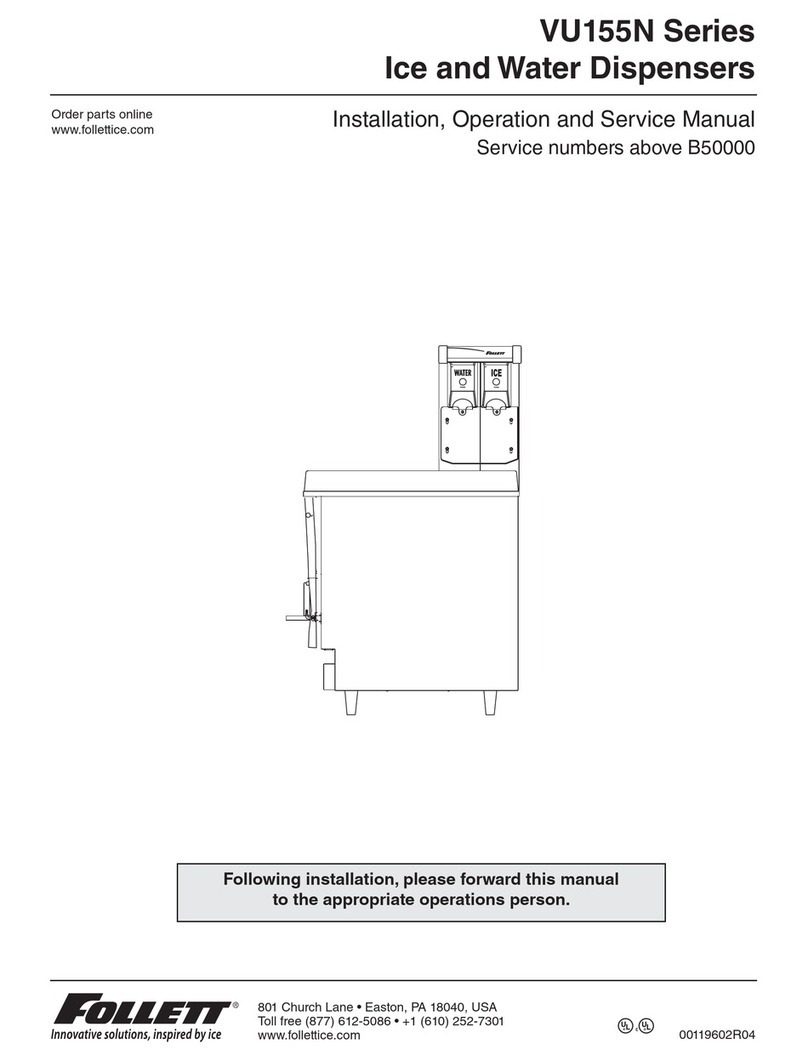
Follett
Follett VU155N Series Installation, operation and service manual
